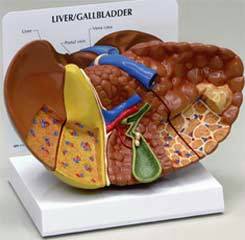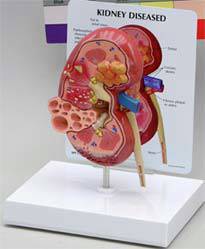Home » Hospital & Durable Medical Equipment » 3D Cancer Models Help With Difficult Discussions » 3D Cancer Models Help With Difficult Discussions
3D Cancer Models Help With Difficult Discussions

Gastroesophageal Reflux Disease Model
Retail Price: $120.60
Your Price: $90.70
 Unit: 1 set
Unit: 1 set
Medical professionals often have the grim role of telling a patient that he or she has a diagnosis of cancer. This one of the most difficult discussions prepare for. Using different methods of explaining the cancer and the stage it is currently diagnosed at can be very helpful. Patients and their families are often overwhelmed just by the diagnosis, and are unable to take in all the information that the medical staff is providing. Using an anatomical model to help with explanations will provide a clear lasting understanding for everyone involved.
3D cancer models have an advantage over medical pictures, anatomical charts or even disease card displays. Models that are approximately life-size and realistic in their representation of the organ or body part are ideal for both the patient and the doctor. The patient gets a clear visual image of the internal condition. The doctor can use the model to limit the need to use highly specialized medical terms. By pointing at the various aspects of the 3D cancer models the need for those complex medical words is dramatically decreased. This isn't to say they aren't required in the discussions, but even in these circumstances pointing or indicating on the model helps to ensure understanding.
While doctors or medical staff may use 3D cancer models directly in patient consultations, they can also be used by the patient. Having the anatomy models available in waiting rooms or in the consultation room prior to the physician's arrival can help the patient learn about the cancer from an anatomical perspective. This will give the patient a greater understanding of the terminology the doctor uses plus the patient may also develop questions to ask the doctor by viewing the model. Models that provide a card, information and diagram that corresponds with the actual model representation are extremely helpful for this type of self-directed learning.
There are a wide variety of 3D cancer models to select from. For oncologists and other specialists, it is highly recommended that several different models be available to help patients with various types of cancers. Most medical offices will have 3D cancer models of breast cancer, prostate cancer and uterine cancers. However, there are many other model options available. These can include skin cancer, stomach and lung cancer and colorectal cancer models. Many of these models are small in size and extremely easy to store in medical supply cupboards or display cases when not in use. Some of the models offer depictions of the various stages of the cancer in the particular organ or tissue. This option allows the patient and doctor to talk about future health issues and how interventions can prevent progression of the disease.
According to research by Globocan, there were 12.6 million new cancer cases in 2008 with approximately 7.6 million deaths worldwide attributed to the disease. Although some cancer rates are declining the overall trend is for higher rates of diagnosis. This means that medical professional need to prepare to have these difficult discussions with patients. Investing in high quality 3D cancer models can provide the support and assistance needed in these difficult conversations with patients and their families.
MSEC remains dedicated to providing the very best and the very latest in medical supplies and equipment. We never cease to be on the lookout for the latest innovation that will benefit both our many clients and the patients they dedicate their lives to caring for. If you have any difficulty finding your choices in our vast inventory, call our customer service at 1-877-706-4480 to speed up your order or to make a special request. We are always happy to help you.
















